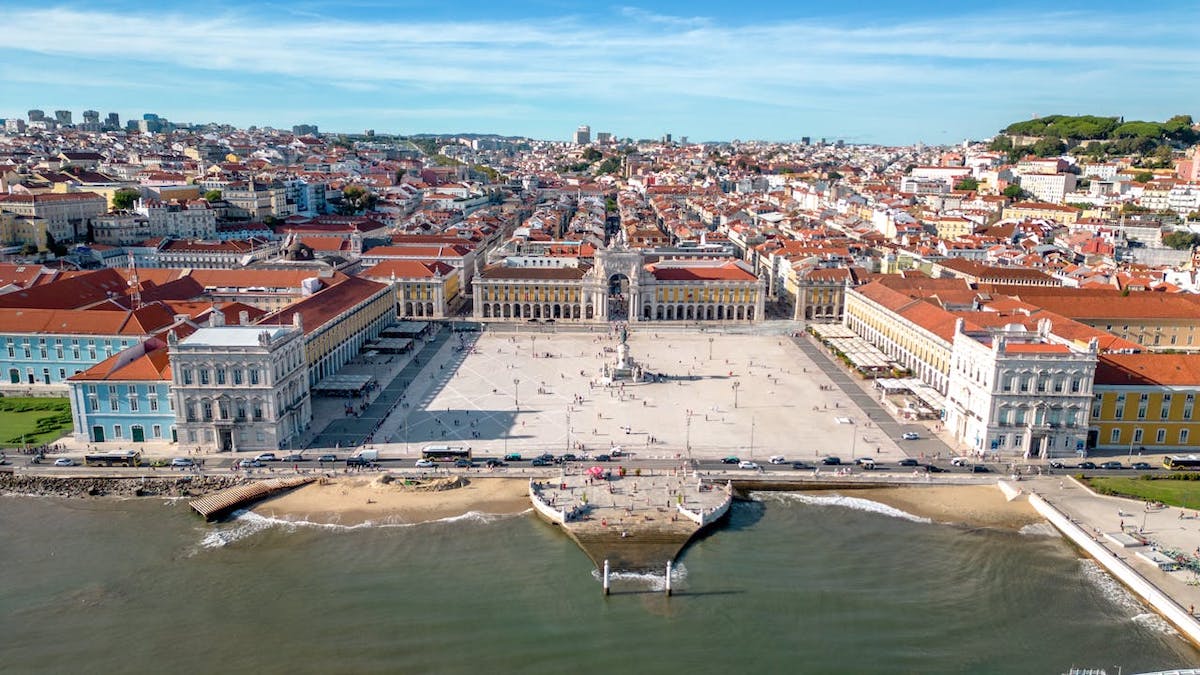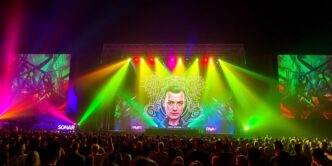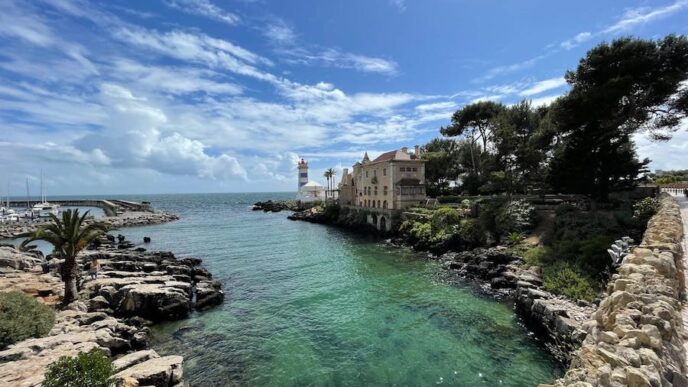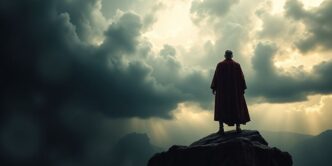Lisbon, Portugal’s capital, is a city steeped in history, with its heritage reflected in its stunning architecture, historic neighborhoods, and significant landmarks. Here are some of the best historical sites to visit in Lisbon:
1. Belém Tower (Torre de Belém)
- Significance: A UNESCO World Heritage Site, this 16th-century fortification stands as a symbol of Portugal’s Age of Discovery. It served as a defense tower and a ceremonial gateway to the city.
- Architecture: Showcases the Manueline style, with intricate maritime motifs and carvings.
- Visitor Tip: Climb to the top for panoramic views of the Tagus River.
2. Jerónimos Monastery (Mosteiro dos Jerónimos)
- Importance: Built to commemorate Vasco da Gama’s voyage to India, this UNESCO World Heritage Site exemplifies the wealth and power of Portugal during the Age of Discovery.
- Features: The cloisters are some of the most beautiful in Europe, with elaborate arches and stunning stonework.
- Nearby: Don’t miss trying the famous Pastéis de Belém from the nearby bakery.
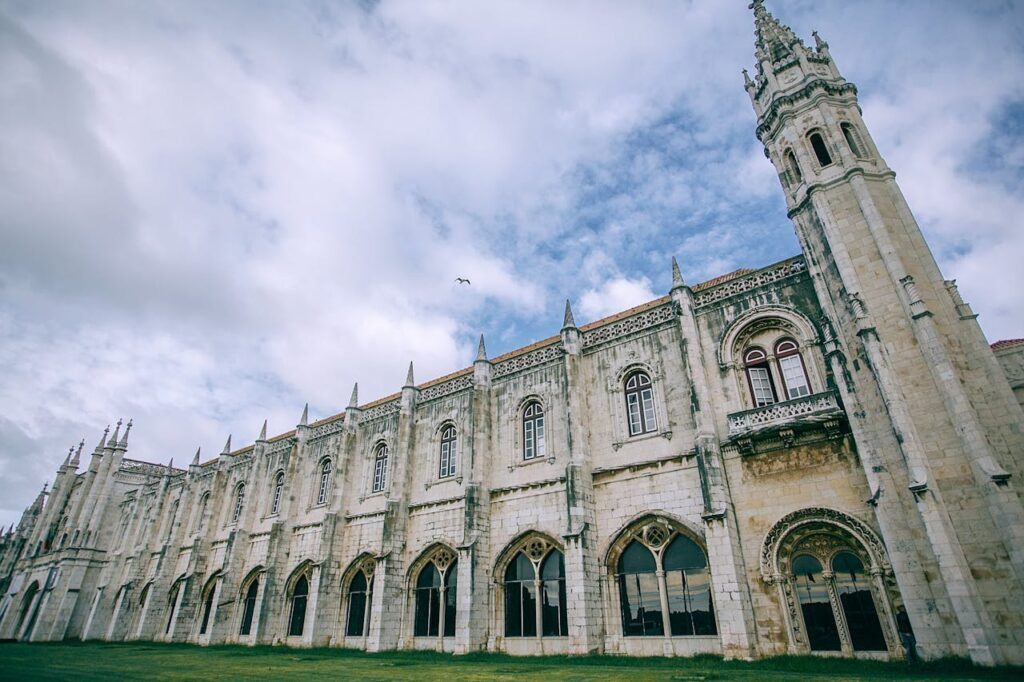
3. São Jorge Castle (Castelo de São Jorge)
- History: Originally built by the Moors in the 11th century, this medieval fortress was later used as a royal palace. It played a significant role during the Portuguese Reconquista.
- Highlights: The castle provides breathtaking views over Lisbon’s historic Alfama district and the Tagus River.
- Activities: Explore the towers, ramparts, and archaeological site within the castle grounds.
4. Alfama District
- Description: The oldest neighborhood in Lisbon, known for its narrow, winding streets, traditional houses, and vibrant atmosphere.
- Historical Relevance: This area has maintained its medieval character, surviving the 1755 earthquake. It is the birthplace of Fado music, an integral part of Portuguese culture.
- Things to Do: Visit Fado museums, small artisan shops, and enjoy authentic local dining experiences.

5. Lisbon Cathedral (Sé de Lisboa)
- Significance: The oldest church in the city, dating back to the 12th century. It was constructed on the site of a former mosque after the Christians retook the city.
- Architecture: A mix of Romanesque, Gothic, and Baroque styles due to various reconstructions over the centuries.
- Interior: Houses impressive religious relics and an ornate cloister.
6. Carmo Convent (Convento do Carmo)
- Historical Context: This Gothic convent was partially destroyed in the 1755 earthquake and stands as a hauntingly beautiful ruin today.
- Current Use: Now home to the Carmo Archaeological Museum, which displays a range of historical artifacts from prehistory to the Middle Ages.
- Atmosphere: The open-air structure is a poignant reminder of Lisbon’s resilience.
7. Monument to the Discoveries (Padrão dos Descobrimentos)
- Purpose: Erected in 1960 to commemorate the 500th anniversary of the death of Prince Henry the Navigator.
- Design: Shaped like a ship’s prow, it features prominent figures from Portugal’s Age of Discovery, including Vasco da Gama and Ferdinand Magellan.
- Experience: Climb to the observation deck for stunning views of the Belém district and the river.

8. Rua Augusta Arch (Arco da Rua Augusta)
- Historical Importance: Built to celebrate Lisbon’s reconstruction after the 1755 earthquake, this triumphal arch marks the entrance to the city’s main shopping street, Rua Augusta.
- Viewpoint: Visitors can access the top for panoramic views of the Praça do Comércio and the Tagus River.
9. National Pantheon (Panteão Nacional)
- Description: Originally built as a church in the 17th century, it was later converted into a national pantheon, housing the tombs of notable Portuguese figures, including fado singer Amália Rodrigues.
- Architecture: Known for its Baroque style and impressive dome.
- Visit: Climb to the top of the dome for a sweeping view of the river and Alfama district.
10. Aqueduct of Águas Livres (Aqueduto das Águas Livres)
- Engineering Feat: A significant example of 18th-century Portuguese engineering. The aqueduct spans 18 km and survived the 1755 earthquake intact.
- Unique Experience: Walk along the aqueduct to appreciate its size and the view over the Alcântara Valley.
Conclusion
Lisbon is a city that weaves its history into every street, square, and building. From the grand monuments of Belém to the intimate alleys of Alfama, visitors can immerse themselves in centuries of exploration, resilience, and cultural richness. These historical sites highlight the essence of Portugal’s capital, making it a must-visit for history enthusiasts and travelers alike.

